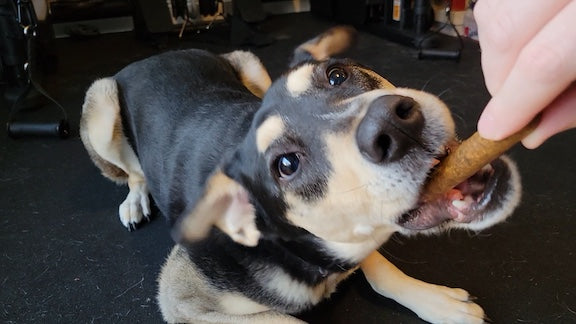
Why whole prey is best for dogs
Share
Pet owners want the best for their pets, and that means being responsible for what your dog puts into their body. Even if you’ve done a lot of research on the best kibble brands to trust, there are probably still some areas where you’re feeling a little unsure. Maybe you’re hesitant about the fillers used in commercial dog food or you don’t trust big factories with deadlines to meet. No matter your reason, it’s smart to consider all your options when it comes to pet food and treats!
Many people are discovering that their dogs do very well on a whole prey diet, and there are some scientific reasons for that. If you’re interested in adding some whole prey to your pet’s diet—even if it’s just in the form of treats!—then you should know the impact that this small but powerful choice can bring. Here are some of the reasons why whole prey is best for dogs.
Nutrient Density
One of the main problems that you may have encountered when purchasing treats and snacks for your dog is that most products are filled with a lot of preservatives and colors and not so much actual meat products. Whole prey provides unparalleled nutrition because it is made of the whole animal, just like your pet would find in nature.
For instance, whole prey is high in insoluble fiber—the type of fiber that doesn’t dissolve in water. That means it bulks up your pet’s stool, keeping them regular and reducing tummy upsets like constipation. (It can also help your pet express their anal glands so you don’t have to worry about that uncomfortable situation.)
Whole prey also offers a rich array of vitamins, minerals, and important fats that fuel your dog’s brain and body. The muscles of an animal provide protein and zinc, while the bones offer calcium and the kidneys supply the niacin your pet craves. Nutritionally dense tissues such as liver can provide thiamin and folate, which support your dog’s metabolism and keep them supplied with all the building blocks they need to stay active and healthy.
Enrichment
Most owners know that their pets benefit from enrichment, whether that’s playtime or a walk full of interesting smells. However, snack time can also be a great source of enrichment! Whole prey can be very exciting in this regard because it’s made of so many components. Unlike kibble or off-the-shelf treats, whole prey contains numerous unique ingredients, such as bones, parts of birds, rabbit fur, and more. There’s always something captivating to sniff for in a single treat when it’s made of whole prey!
This also works to an owner’s advantage for other playtime routines. Is your pet interested in puzzle toys? The curious smell of a whole prey treat can completely reinvigorate their interest in a puzzle toy—or even get them interested for the first time. Try hiding pieces of a whole prey link around the house for an enriching sniff test!
Awareness
Do you know what’s in your pet’s treats? Even if you read the back of the package, you might fight vague terms like “byproducts,” “flavors,” or strings of letters and numbers that don’t really mean much to you (they’re usually artificial coloring). It’s hard to make informed decisions for your pet when you don’t even know what goes into making the things they eat.
Whole prey treats avoid this problem by including an entire animal with no other ingredients. For instance, True Whole Prey’s ultra-blend jerky links are made with Ohio raised rabbit, guinea fowl, chicken and quail, and 100% natural beef collagen casing. No mess, no fuss, just a list of exactly what you’re feeding your pet so you can make a choice you’re confident in.
Dental Hygiene
Whole prey offers a less commonly known advantage that other treats and food products don’t: dental hygiene benefits. Unlike store-bought treats, which are a sort of soft amalgamation of blended materials, whole prey foods include materials like bones and cartilage. These can help to clean your pet’s teeth as they chew, reducing the accumulation of plaque and tartar. Not only can this save you money on dental cleanings, but it can improve your pet’s breath and keep them safe from oral bacteria that can cause gum disease!
